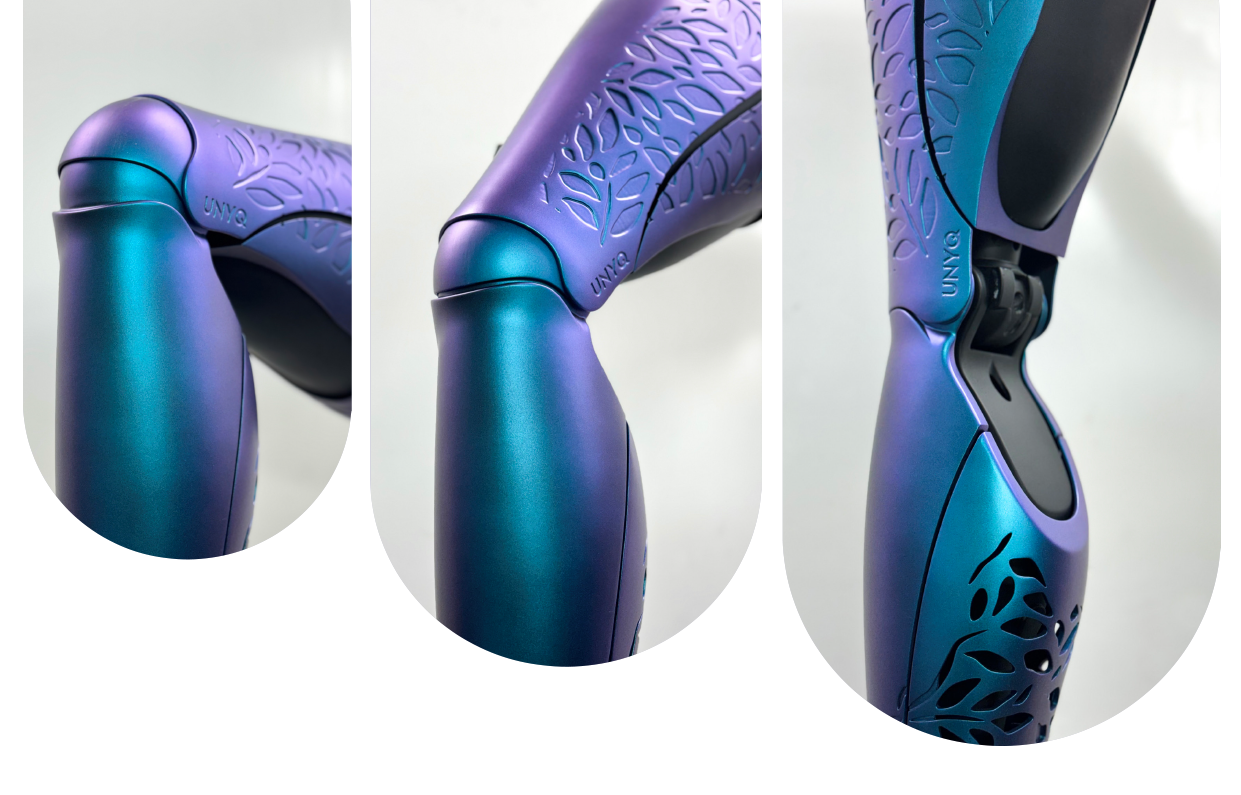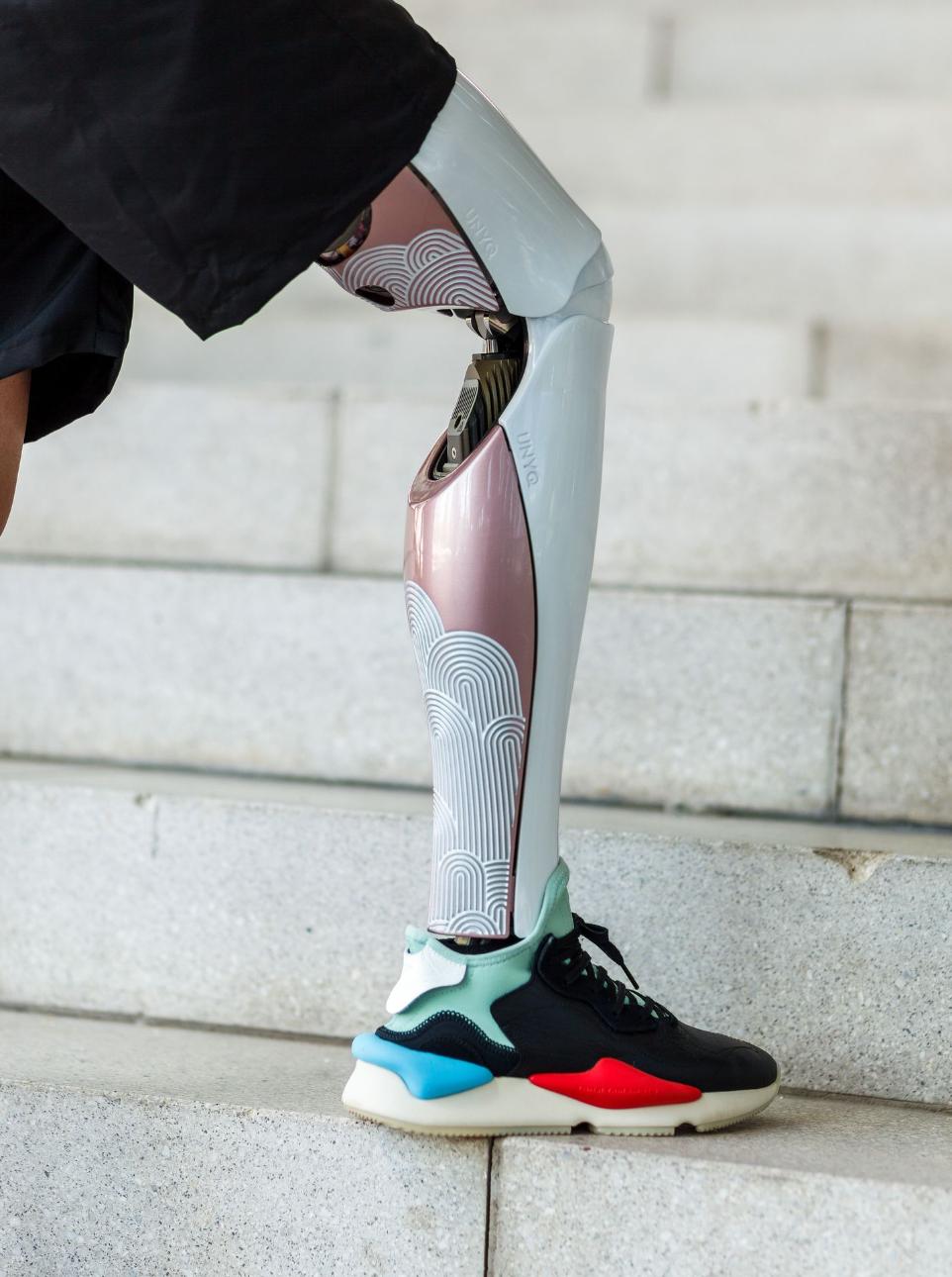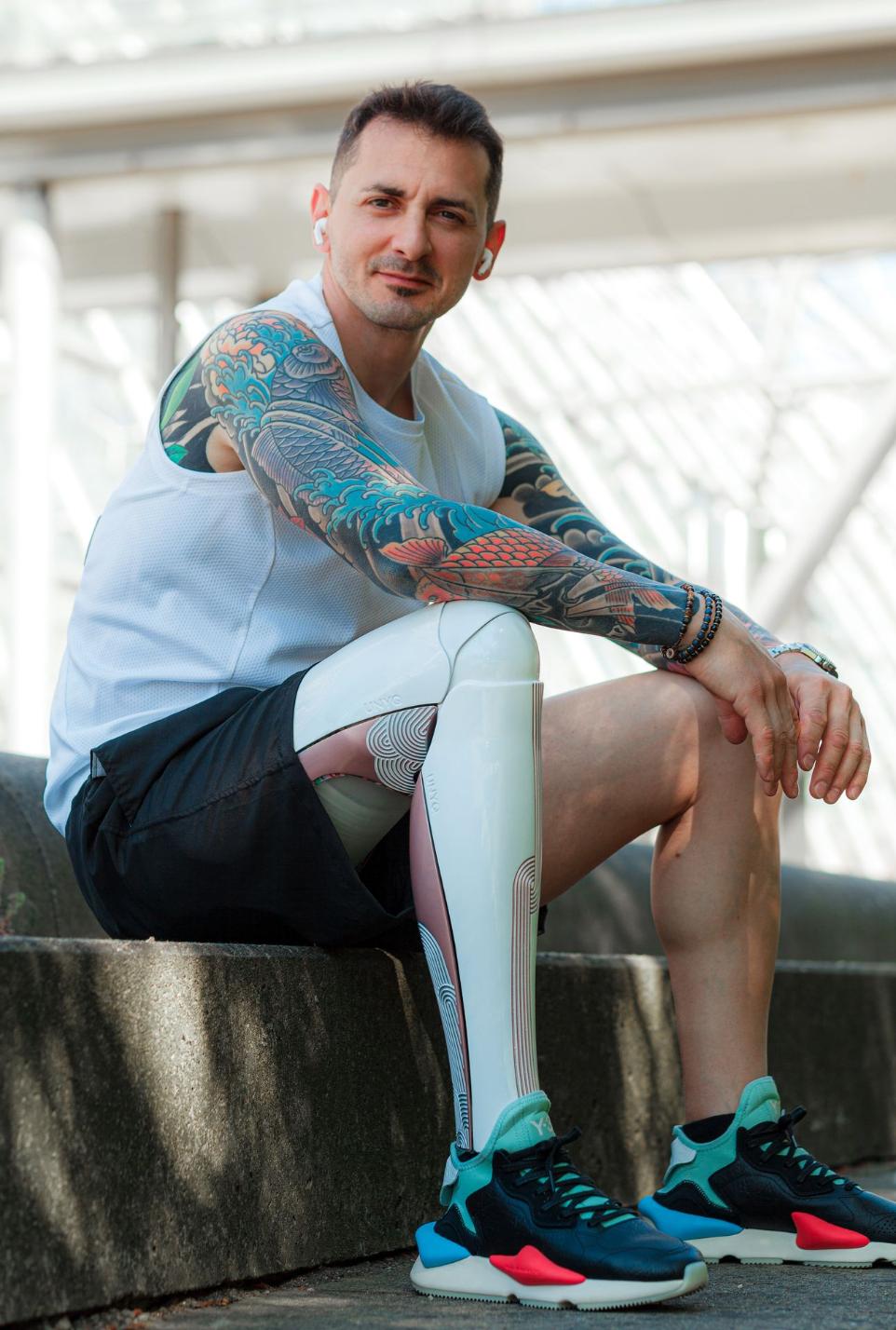OneFit
Customized & articulated complete solution for transfemoral prosthesis
OneFit is our innovative solution that replicates the complete anatomy of the leg, from the socket to the ankle, ensuring full coverage with no gaps. Specifically designed to protect all prosthetic components, it includes a functional joint that allows natural knee movement without compromising functionality.
Fully customizable in design and color, OneFit help you regain a full anatomical shape with an impeccable aesthetic, boosting self-confidence and supporting emotional and psychological recovery, while protecting prosthetic components.
Complete coverage, maximum protection

Natural look
A sleek, anatomical appearance that blends seamlessly with your body, enhancing your sense of confidence and comfort.
Total protection
Full coverage from socket to ankle with an articulated joint, allowing you to move without worry, protecting both your prosthetic components and your clothing.
Comfort & Perfect fit
Made to measure for a perfect fit, ensuring optimal functionality without noise. Enjoy all-day comfort and effortless wear.
Customized to your style
Choose from a variety of designs and colors to match your personality, so you can feel uniquely you and stylish every day.
Browse all designs


